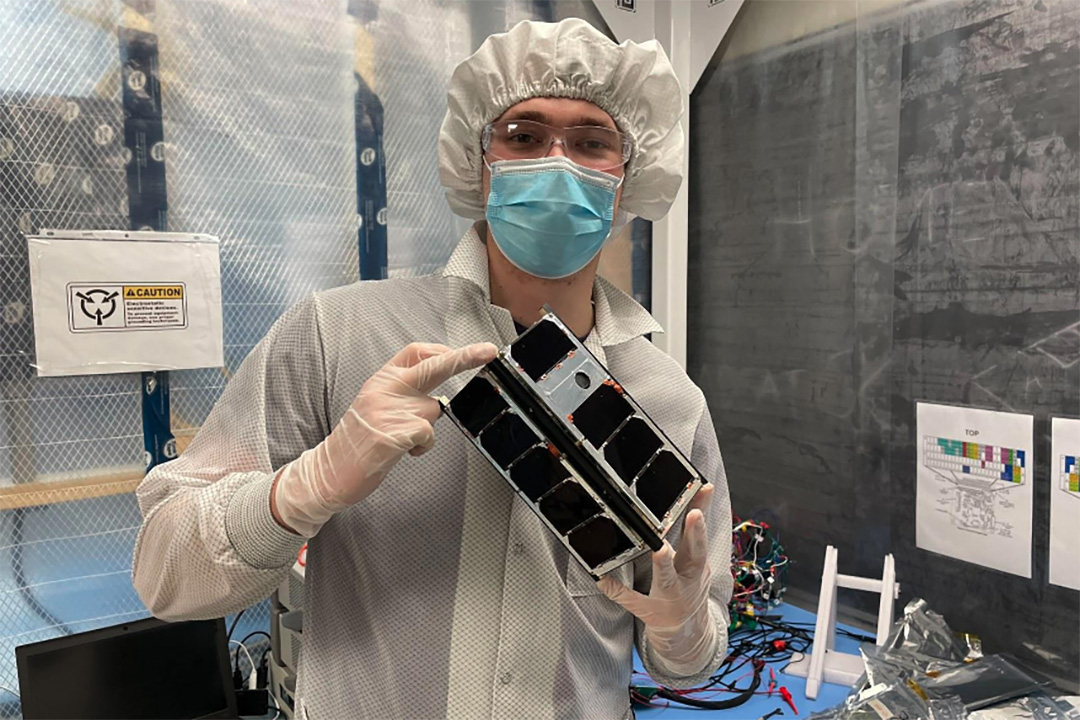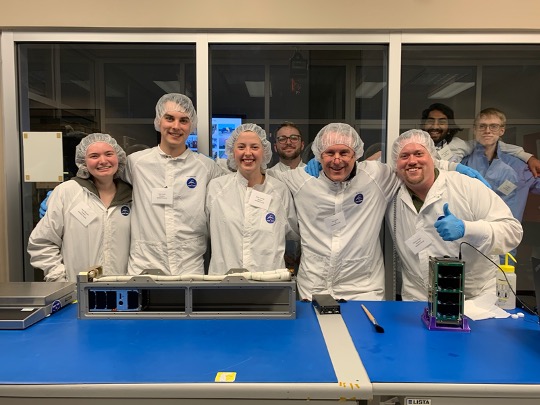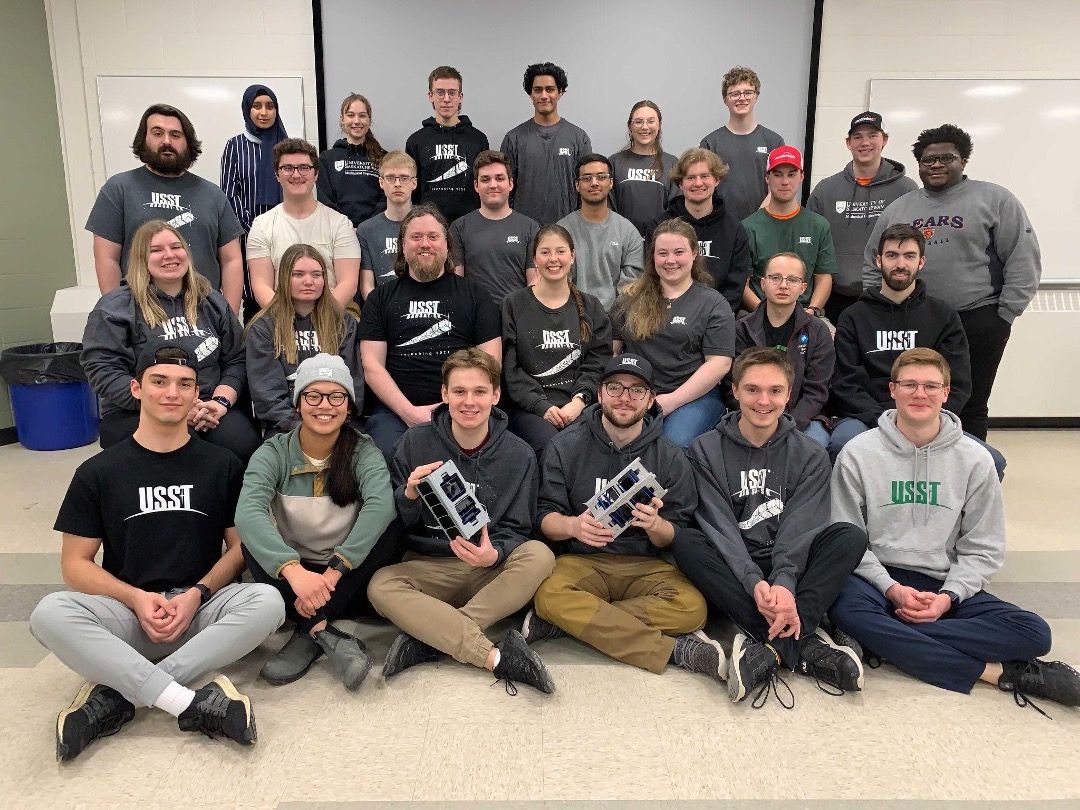
USask student satellite to be launched to the International Space Station
For nearly five years, students at the University of Saskatchewan (USask) have dedicated countless hours to develop a cube satellite that is now scheduled to be launched into space on June 3.
By Layne RansomThe cube satellite, dubbed RADSAT-SK, will be launched to the International Space Station (ISS) via the SpaceX CRS-28 rocket. The team of USask students believes it is the first made-in-Saskatchewan satellite that will be sent into space. From the ISS, the satellite will be sent into its own orbit where it will remain for approximately one year. During that time, the team will collect experimental radiation data from a ground station located on the USask campus.
The launch is the culmination of a project that began in fall 2017, when a small group of students and their faculty advisor, Dr. Sean Maw (PhD), submitted an application for the Canadian Space Agency (CSA) Canadian CubeSat Project (CCP). The CCP program was developed by the CSA to increase student interest in STEM across Canada, while involving them in real space missions that will meaningfully contribute to the scientific community. Each post-secondary institution participating in the CCP program was given the opportunity to design and build its own cube satellite.
Leading the project was a significant undertaking for a group of undergraduate students, but Maw, the Jerry G. Huff Chair in Innovative Teaching, and a faculty member in Graham School of Professional Development (SOPD) at USask Engineering, knew it was an incredible opportunity and believed it could be done.
“When I was an undergraduate student, my friends and I wanted to design a small satellite,” said Maw. “We formed a team of over 60 students, and we even had a mission design! But we couldn’t find a faculty advisor to supervise us, which was required for us to proceed.
“When the opportunity arose to design and build a satellite at USask with the Canadian CubeSat Program, I wasn’t going to let that fate befall this generation of students. After a few years of planning and hard work, the RADSAT-SK team has built a real satellite for launch,” added Maw, who provides faculty oversight for the mission and serves as principal investigator along with Dr. Brian Berscheid (PhD).

The RADSAT-SK cube satellite began development in spring 2018 with about 20 engineering undergraduate students on board. Since then, the project has grown immensely, with hundreds of students involved in some capacity over the years.
The RADSAT-SK satellite’s payload – what it is carrying as it orbits the Earth – focuses on radiation-based research. USask electrical and computer engineering professor Dr. Li Chen (PhD) and his team developed a dosimeter board to measure radiation from space. Dr. Ekaterina Dadachova (PhD) and her team within the USask College of Pharmacy and Nutrition developed a fungal melanin coating that has been placed on part of the board. Melanin pigments are found in many diverse fungal species which can inhabit some of the most extreme habitats on earth.
The research goal of Dadachova’s work is to test the feasibility of melanin as a cosmic radiation shielding method in space, while the goal of Chen’s work is to measure radiation at a reduced cost compared to current methods.
The cube satellite project has been a life-changing experience for many students.
“Growing up I fell in love with Star Trek and space. Finding out as a student at USask that I could be a part of a project that would send a research satellite to space was an opportunity that fulfilled one of my life’s earliest goals. Little did I know how important the RADSAT-SK cubesat would become to me. My work on the project enriched my life in countless ways,” said Dustin Preece, one of the technical project managers.
The RADSAT-SK project could not have made it this far without the project partners, which include the CSA, University of Saskatchewan Space Design Team, USask College of Engineering, and Saskatchewan Polytechnic. The team extended its appreciation to industry partners Calian Advanced Technologies and Galaxia Mission Systems for their technical advisement and support, along with numerous individual donors. The students also expressed their gratitude to Maw and Berscheid for their mentorship and dedication.
“Above all, I will always remember the incredible talent, humility, generosity, and tenacity of everyone who made RADSAT-SK a success. It has truly been an honour to be on this journey,” said Preece.

Together we will support and inspire students to succeed. We invite you to join by supporting current and future students' needs at USask.

